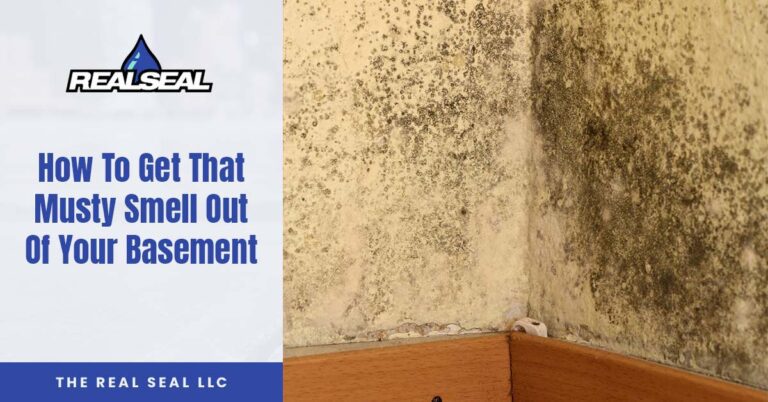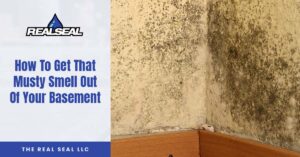Searching for answers on how to get that musty smell out of your basement? If so, don’t hit that back button because you’ve landed on the right page. In this article, we’ll go over why basements sometimes smell musty, how to get that musty smell out of your basement for good, and more.
Why Do Basements Sometimes Smell Musty?
The number one reason basements often smell musty is the presence of moisture. Moisture creates an ideal breeding ground for mold and mildew, which can grow on organic materials such as wood, insulation, carpets, and clothing.
So, the question is, where’s the moisture coming from?
The sources of basement moisture can vary depending on the location and condition of the home. However, there are several common sources of basement moisture that homeowners should be aware of:
One of the most common sources of basement moisture is water seepage through cracks in foundation walls or floors. This happens when there’s excess moisture in the ground around the foundation. This excess moisture can be caused by various things, including poor drainage, heavy rain, flooding, and an improperly graded yard that slopes toward the foundation. If hydrostatic pressure builds up, it can push water through invisible cracks in a foundation wall.
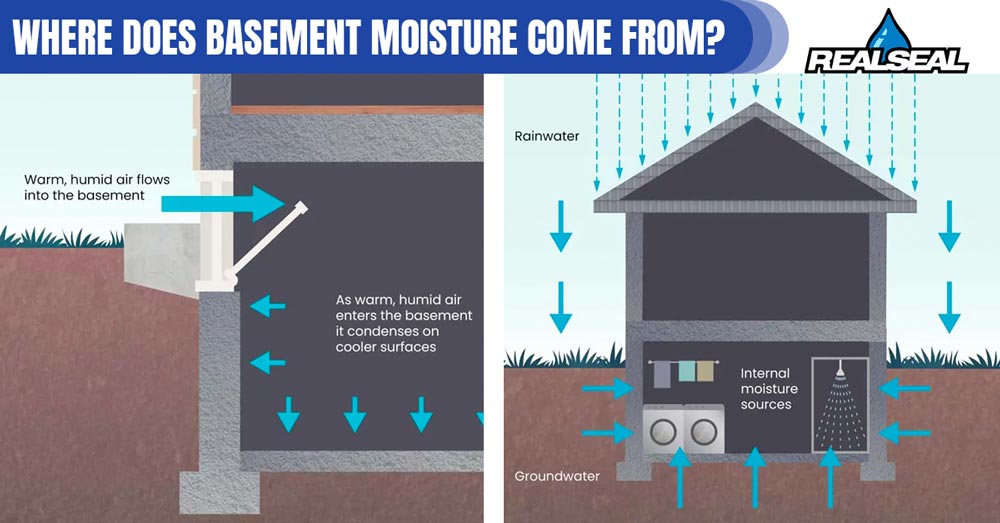
When there’s excess moisture in the ground around a foundation, water can enter the basement through the joints where the walls meet the floors (cove joints) or around pipes and utility lines that enter the home at the foundation level.
Another common source of basement moisture is condensation. This can occur when warm, moist air flows into the basement through open windows and comes into contact with cool surfaces such as walls or pipes.
Window wells with poor drainage can allow water to enter the basement.
Finally, improperly vented clothes dryers, kitchens, and bathrooms can also cause moisture in a basement.
Why You Don’t Want Moisture In Your Basement
Excess moisture in the basement can lead to numerous problems, including mold growth, musty odors, structural damage, and poor air quality. These issues can affect the inhabitants’ health and well-being and the building’s structural stability.
- You don’t want moisture in a basement because mold releases spores that can cause allergies, respiratory issues, and even asthma attacks in sensitive individuals. This is because mold produces microscopic, airborne spores that become easily dispersed throughout the house through the ventilation system, air conditioning ducts, or by simple air movement. Mold can accelerate the deterioration of your walls, floors, ceilings, and furnishings if left untreated.
- Excess moisture in your basement also attracts pests, such as termites, cockroaches, and rodents, which can cause a lot of damage and are a health hazard.
- Dampness in a basement can also cause metal to rust and corrode your electrical wiring, leading to short circuits and fire hazards.
- In addition to these health and structural risks, a damp basement can negatively impact your home’s energy efficiency. Moist indoor environments require more energy to heat or cool, which can lead to higher utility bills.
- Excess moisture in the basement can also lead to musty odors. These unpleasant smells can be difficult to eliminate, making it challenging to enjoy your living space.
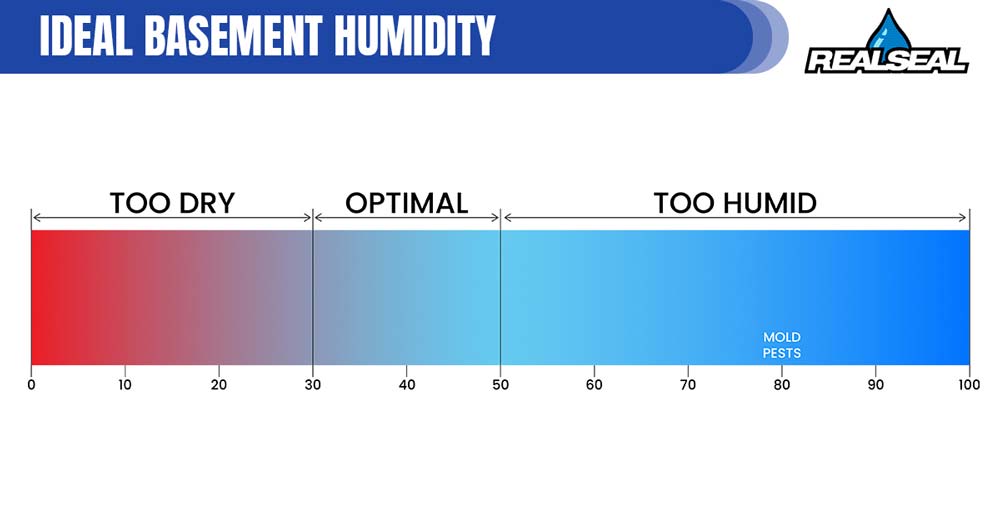
How To Get A Dry Basement That Doesn’t Smell Musty
To eliminate that musty smell in your basement, you must control groundwater around the foundation. If the ground around the foundation is saturated with water, your basement will be damp and musty.
Installing an exterior or interior drain tile system is the best way to control groundwater around a foundation.
An exterior drain tile system is installed around the outside perimeter of your foundation at the footing level. The general installation procedure is as follows:
- First, the soil around the foundation is excavated down to the footing.
- Next, a shallow trench is dug around the foundation’s perimeter and lined with gravel.
- A perforated drainage pipe is placed into the trench and covered with more gravel.
- Finally, the excavated soil is replaced.
Now, excess ground moisture will flow into the drainage pipe and toward a sump pit. When the sump pit is full of water, a sump pump will turn on and eject the water a safe distance from the foundation (i.e., at least 15 feet).
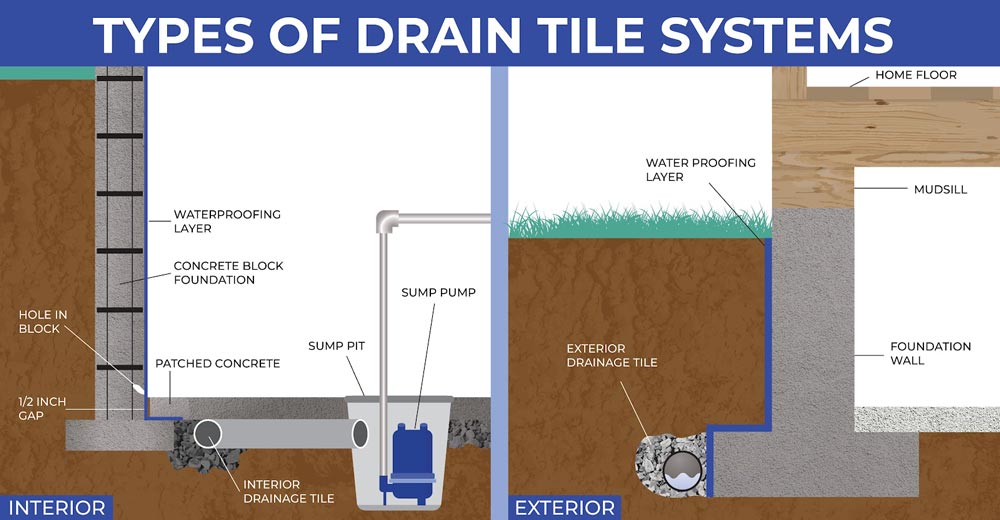
An interior drain tile system is installed around the inside perimeter of your basement, which means using a jackhammer to break up the floor and create the trench. After the trench is lined with gravel, the drainage pipe is placed in it and covered with additional gravel. The final step involves replacing the slab.
While a drain tile system is the best foundation waterproofing solution available today, there are other things you can do that aren’t as costly. You can do these things for added protection, even if you install a drain tile system. It would be a good idea if you did.
- Re-grade the yard around your home – One of the most effective ways to control moisture in the basement is to re-grade the yard around the house, if necessary. By ensuring that the ground slopes away from the foundation, water is less likely to enter the basement, and the chances of mold and mildew developing are significantly reduced.
- Install downspout extensions – Downspout extensions direct water safely away from the foundation before release. (Ensure the extensions release water at least 15 feet from the foundation.)
- Clean your gutters regularly – This will help prevent water from spilling over the side of the house and soaking into the ground around the foundation.
- Keep vegetation away from the foundation – It’s also important to avoid planting flowers and shrubs next to the foundation. While these may enhance the home’s visual appeal, they can also trap moisture near the foundation.
- Ensure window wells have proper drainage – Water should not accumulate in your window wells. If that happens, it can get into your basement.
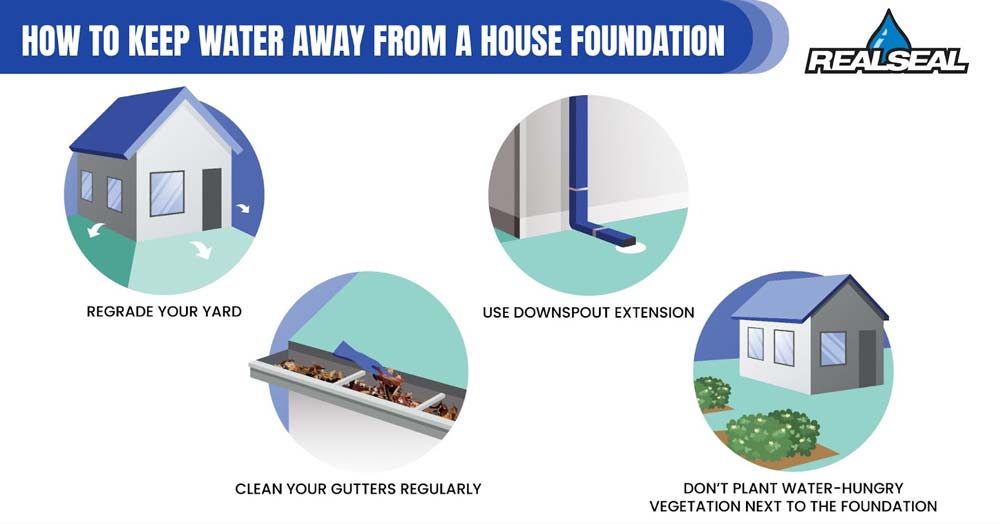
If you’re concerned about the musty smell in your Chicagoland basement, contact The Real Seal today and schedule an evaluation.
